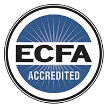Unraveling a tale from the spreadsheets to the pews
Have you ever considered what it feels like to be on the receiving end of your financial reports? Is the information so overwhelming that your church members could compare it to drinking from a fire hydrant? Or do they yearn for more details to inform the decisions they’ll be asked to make?
Both scenarios happen and neither is effective.
When preparing financial reports for your church, far too often financial administrators don’t take the time necessary to tailor the report to the recipient’s needs. A considerable amount of time is spent gathering and validating data, while much less time is spent considering how to communicate. Sometimes, it’s not even considered. Information is transmitted, and your competence is displayed, but you haven’t won any trust.
Don’t get me wrong, the accuracy of our data is a must. However, financial administrators must also learn to share information in a way that is both received and understood.
The first step in becoming a good communicator is identifying your audience. Ask these questions before you begin:
- What is my audience’s competency level?
- What do I want them to retain?
It’s important to present data that meets the needs of your audience. Your message will be retained, and you’ll begin to build chemistry and enhance trust.
Let’s take a church budget report as an example. As many as four different audiences will receive this report, each with different needs. You cannot provide the same data to each audience and expect them all to retain your message.
Pastor
At a high level, the senior leader needs to be aware of the health of congregational giving and how his direct reports are stewarding these gifts. Protect him from too many details. The details are part of your job description, not his. Instead, know the data so well that you can craft an accurate narrative that is easy to consume. As he understands the story, he can better shepherd the flock.
Staff
Your staff require the most details. Each should be intimately familiar with the budget they were given and therefore need to know, line by line, how they are performing. With detailed information, they should be empowered to make nimble decisions regarding their daily activities.
Finance Committee
Your finance committee is charged with governance. Like the pastor, they need to receive information at a higher level. However, they still need sufficient detail to hold the staff accountable, plan for the future, and assure the congregation that financial soundness is being maintained.
Congregation
The congregation should be provided with the least amount of detail. Few in this audience are financial professionals. None are intimately familiar with the budget line items. Keep your report layout simple, your verbal comments brief, and find a way, through story, to connect their tithe to the impact it is making.
The congregation desires reassurance. If you have good news to share, make sure you tell them. If you have difficult news to share, make sure you tell them. Be able to use story to explain what has happened, that there is hope, and that there is a plan. Long after your presentation, they will remember your stories even though they can’t recall the numbers.
As you can tell, there is a natural tension between transparency and comprehension. Apply these concepts as you walk the tight rope and watch as the light bulb illuminates for each of your audiences.
Understanding finances can be challenging for many people. That’s why it’s important you develop finance reports that are clear, concise, and succinct but also straightforward.
If you’d like help on how to make this happen, this will be one of many topics presented at our 2024 Church Finance Conference (CFC24) in October. To learn more, visit WatersEdge.com/CFC24.
by Brad Johnson




